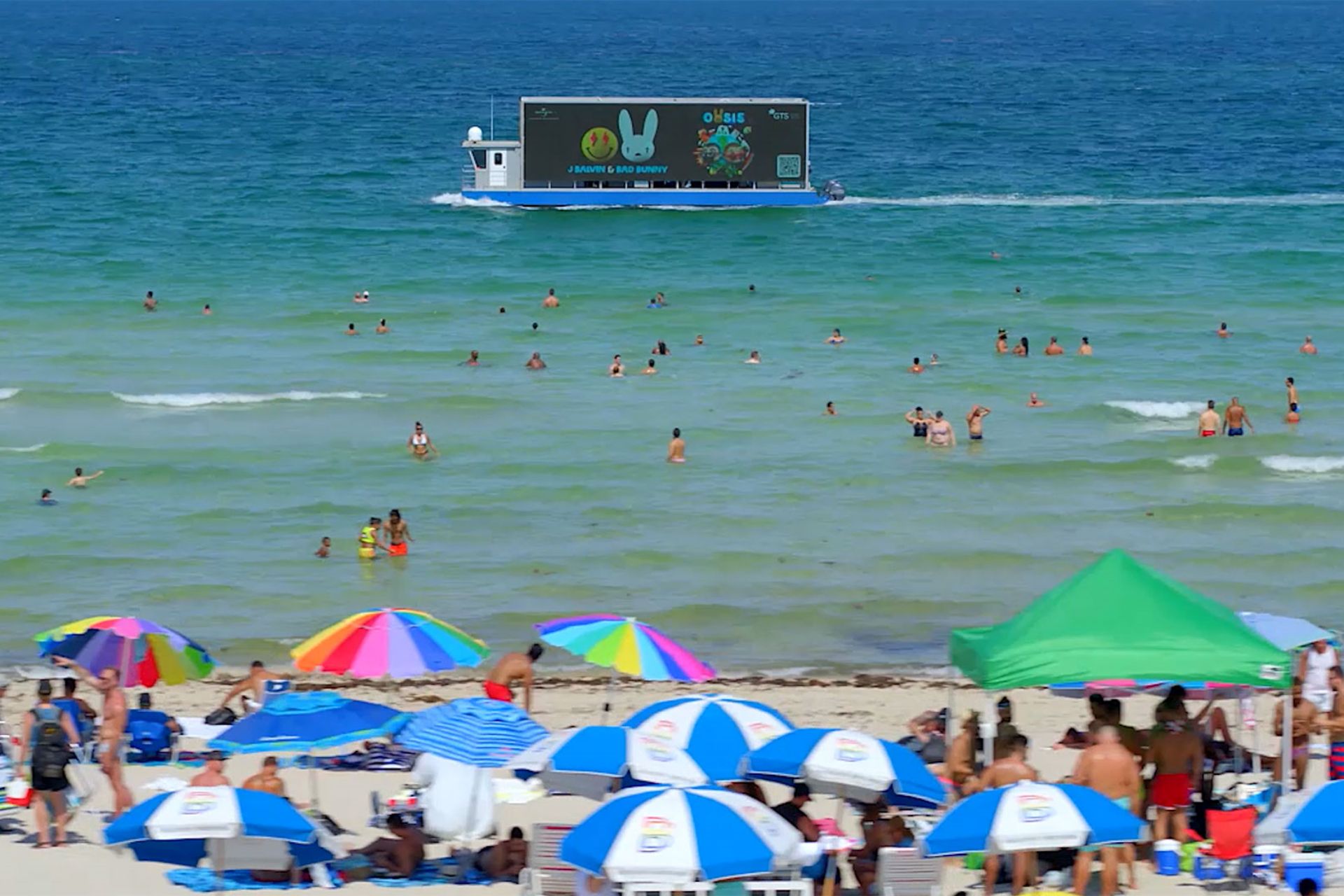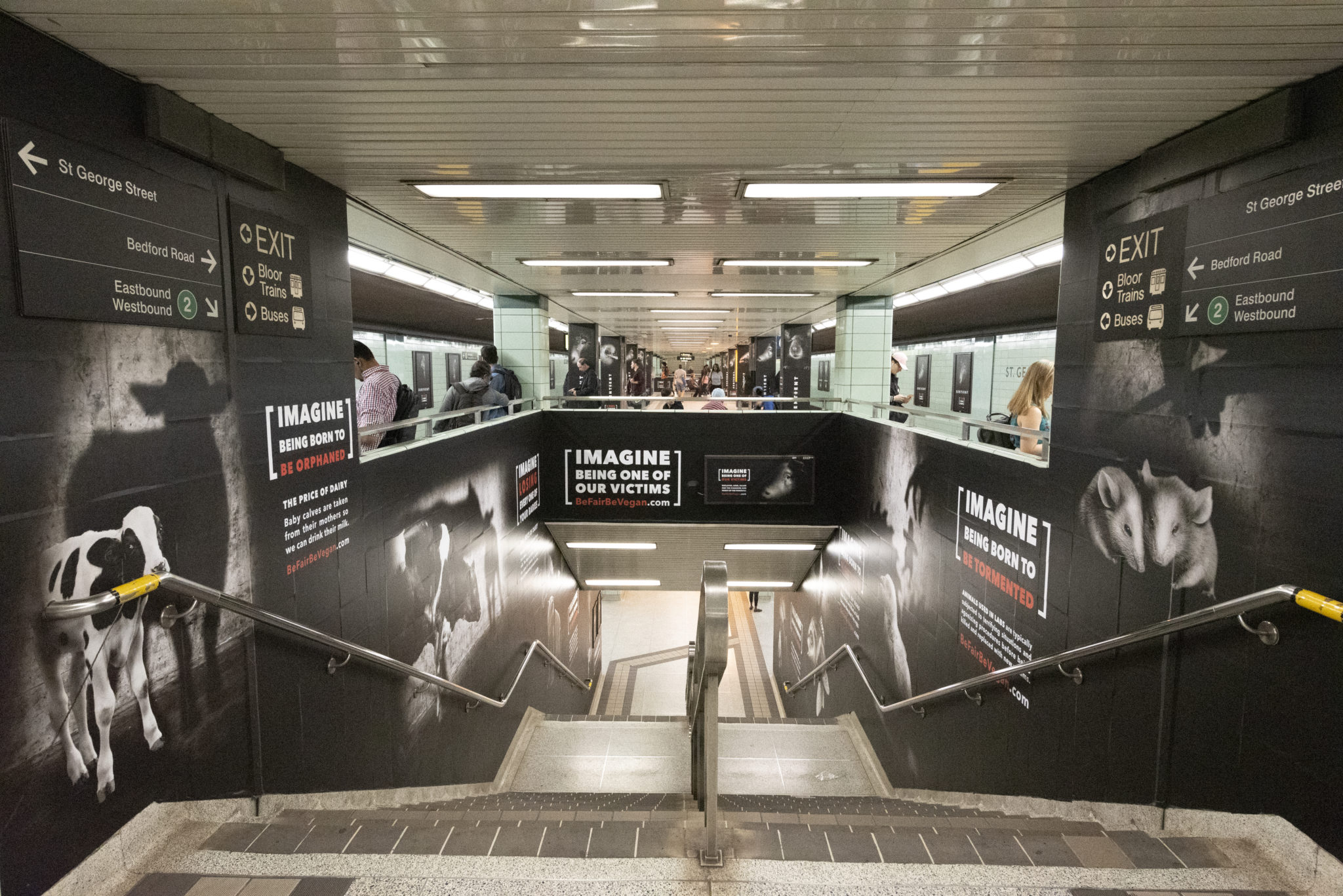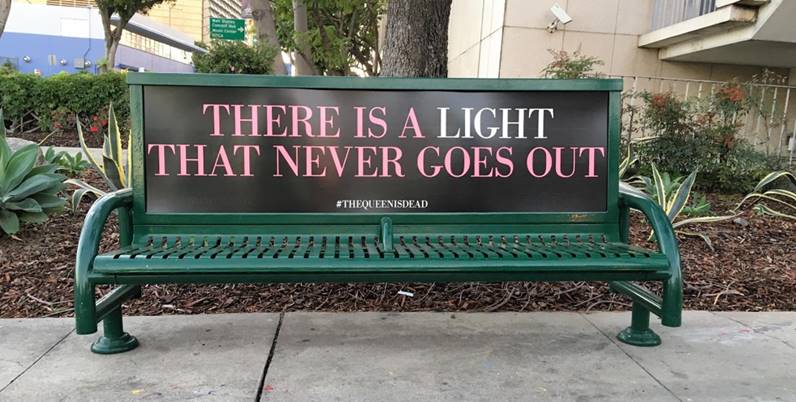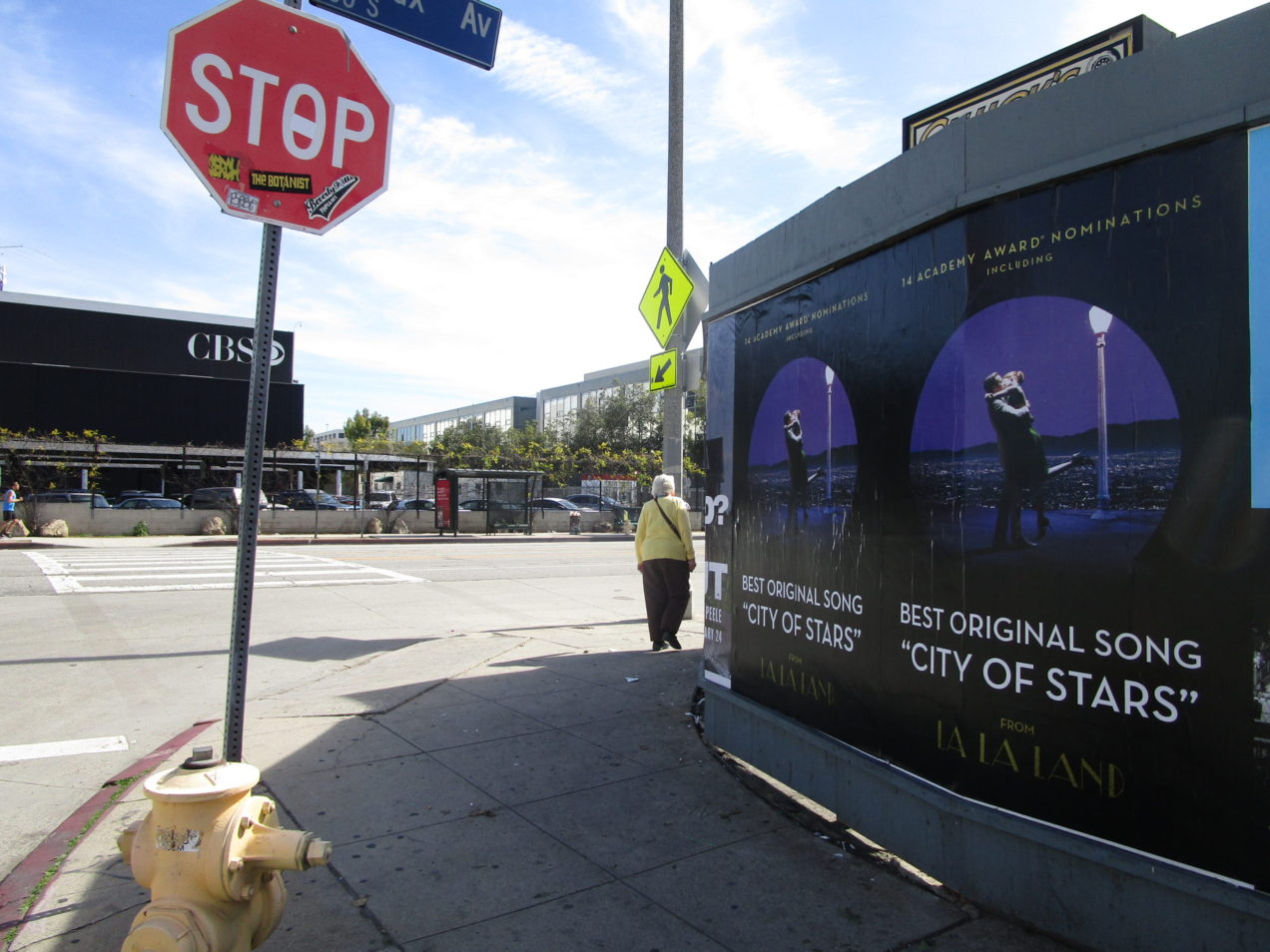Best Creative Practices for Outdoor Advertising
Outdoor Advertising gets a lot of attention for being one of the few traditional advertising formats experiencing growth. Whether you are well-versed in the benefits of out of home (OOH) and use it often, or are just getting started, we want to review our top creative practices for Outdoor Advertising that will help get your ads noticed.
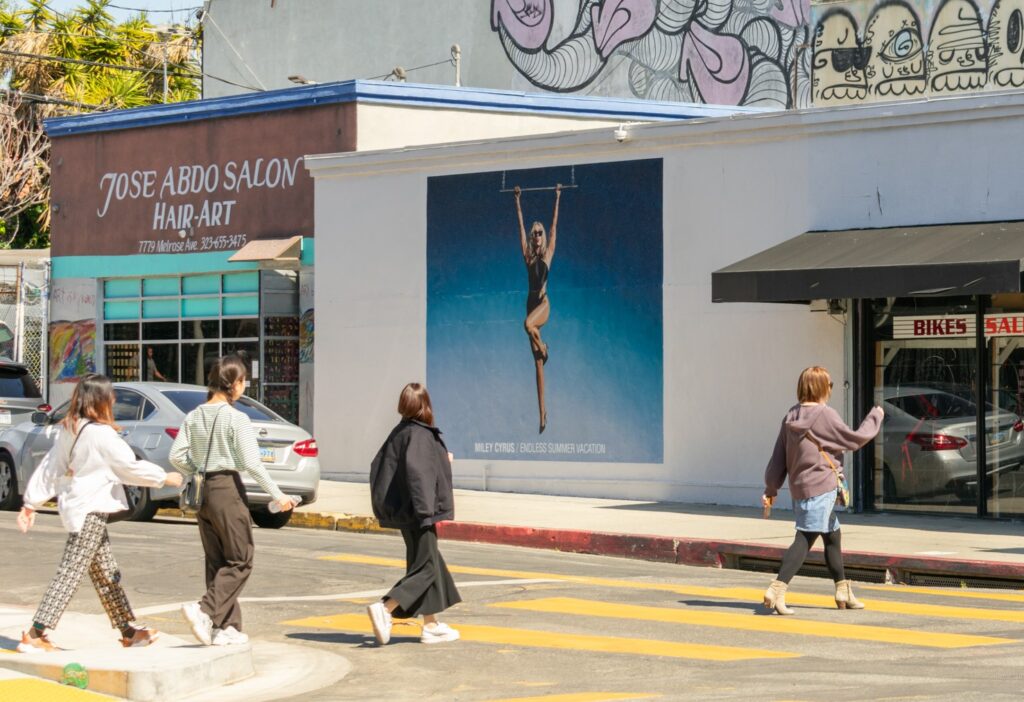
Keep It Simple
A larger ad format doesn’t mean you should cram in more information. Outdoor advertising placements are viewed while on the move. The average driver will have about 5 to 10 seconds to view your billboard. The shorter your message is, the easier it will be for someone to remember.
From static billboards to moving transit units, it’s standard OOH practice to use seven words or less and use a large, clean font. This applies to video units as well and ensures your ad creative is noticeable and easy to read. Use bold, bright contrasting colors for text and background.
Use a memorable copy line and use succinct, clear language – don’t pack several messages into one ad. Are there more product benefits you want to communicate? Create a series of ads that separately introduce your different messaging but tie back to each other with similar styling.
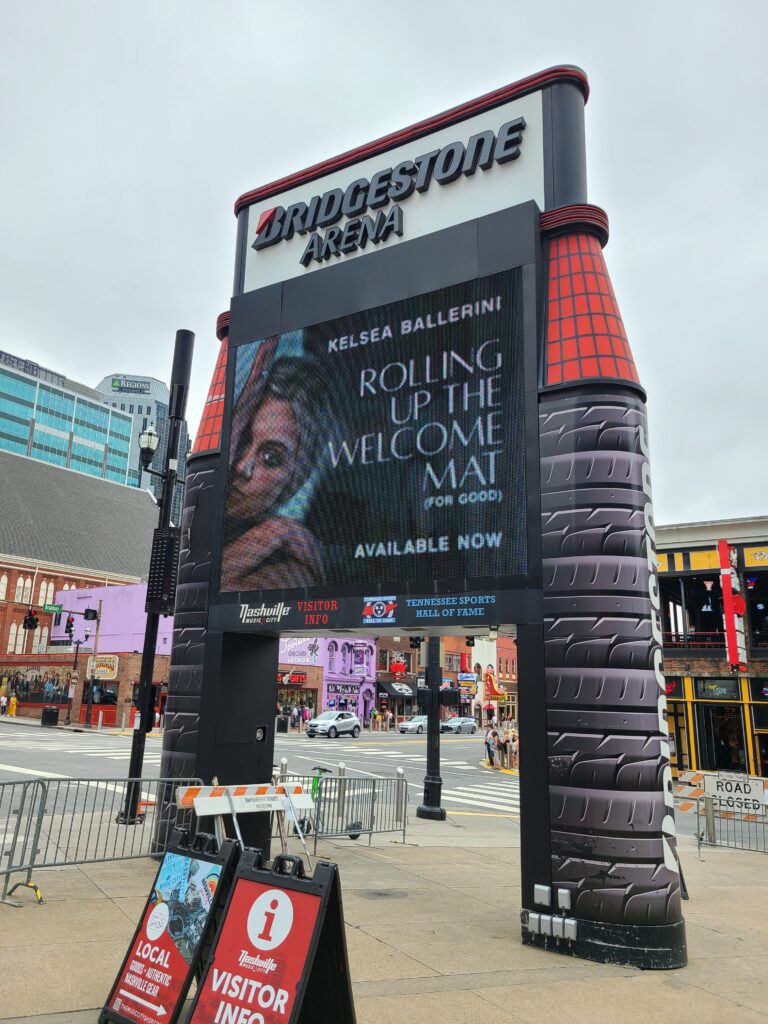
The most effective outdoor advertisements employ a strong visual element that complements the text, rather than competes with it.
For instance, a striking image or a bold graphic can capture attention quickly, allowing the accompanying few words to drive the message home. This method ensures that even at a glance, your ad communicates effectively with the audience.
Consistency in your visual and textual elements across multiple ads can build brand recognition and aid in storytelling. For example, if your campaign includes sequential billboards along a highway, each one could reveal a part of your story or a different feature of your product, inviting the viewer on a narrative journey.
This strategy not only maintains simplicity but also engenders curiosity and engagement, encouraging drivers to look forward to the next piece of the story with each passing billboard.
Think Big: Plan for the Placement
Out of home has its own unique creative requirements and the ads can’t be repurposed from other media channels. Just like your messaging, your creative needs to be intentional in order to connect with your audience. The key to intentional creative is paying attention to the size and format of your placement, as well as, balancing your imagery, copy and whitespace.
Outdoor billboards are viewed at a distance of 500 feet or more. Text needs to be at least a foot tall and space needs to be increased between words and lines making it easier to view from a distance.
Fill the space with one high impact hi-res image — grainy or blurry images don’t look appealing on a large scale. Save detailed images for placements like transit shelters, since individuals typically view them up-close and for a longer duration.
In addition to considering text size and image quality, color choice is crucial for out-of-home advertising. Bright, bold colors grab attention from afar and help your message stand out in the bustling outdoor environment. Avoid using colors that blend into the surroundings, such as greens in a grassy area or grays in an urban setting. Instead, opt for contrasting hues that pop against the background.
The layout of your advertisement should guide the viewer’s eye toward the most important elements. Utilize the rule of thirds to position key components like logos and calls to action where they will be most naturally noticed. This strategic placement ensures that even a quick glance can convey the essence of your message effectively, making the most of those brief moments of exposure.
Nearly 7 in 10 adults say
they have seen some kind of social media element
in an OOH ad.
Among those who recall seeing social media elements, most recall seeing a social media handle or
a QR code.
Location, Location, Location
A roadside billboard is not the ideal place to utilize direct response tactics like using 800#s and lengthy URLs, especially since consumers only have a few seconds to interact with the medium. You want them to take action? Tell a story with high impact ads that they will remember.
In densely populated areas with pedestrians and mass transit options, it’s not always necessary to include a specific point of contact like phone number or address. Research from OAAA and Comscore states that 78% of adults took action with their mobile device after seeing an OOH ad within the past 60 days. And 40% of US adults say they have shared items from an OOH ad to social media after seeing the ad, according to October 2024 data from The Harris Poll.
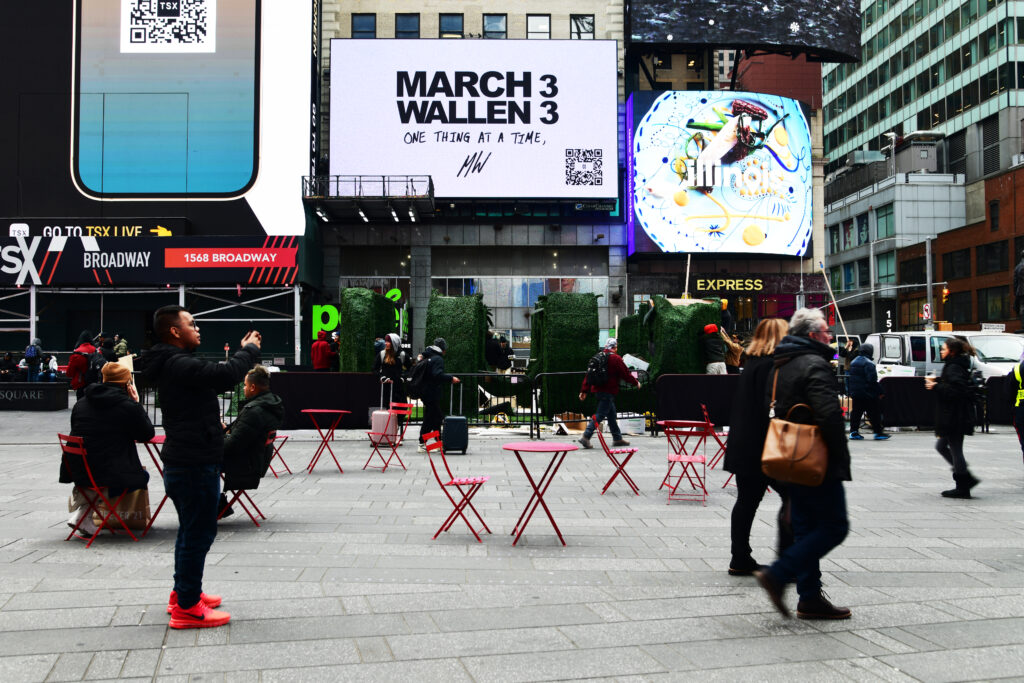
Outdoor advertising can make a big splash with the right placement and right messaging. Be sure to work with a media agency that can find the best environment and location to reach your intended audience.
These placements can accomplish more when used in combination with other media types, where you can reinforce the message and provide more details that you can’t communicate in the space of an outdoor ad.
It’s critical to leverage the synergy between outdoor ads and digital campaigns. Encourage viewers to engage further by aligning your OOH messages with your online presence. For instance, using a memorable hashtag or a unique digital campaign that complements your billboard can spur online engagement.
This method effectively bridges the gap between the physical and digital world, allowing consumers to interact with your brand on multiple platforms at their convenience.
Finally, consider the emotional impact of your placements. Ads located near landmarks or in areas associated with specific feelings or activities can enhance the emotional resonance of your message. For example, a billboard near a sports arena might tap into the collective excitement and energy of fans, making it an ideal spot for ads related to sports apparel or beverages.
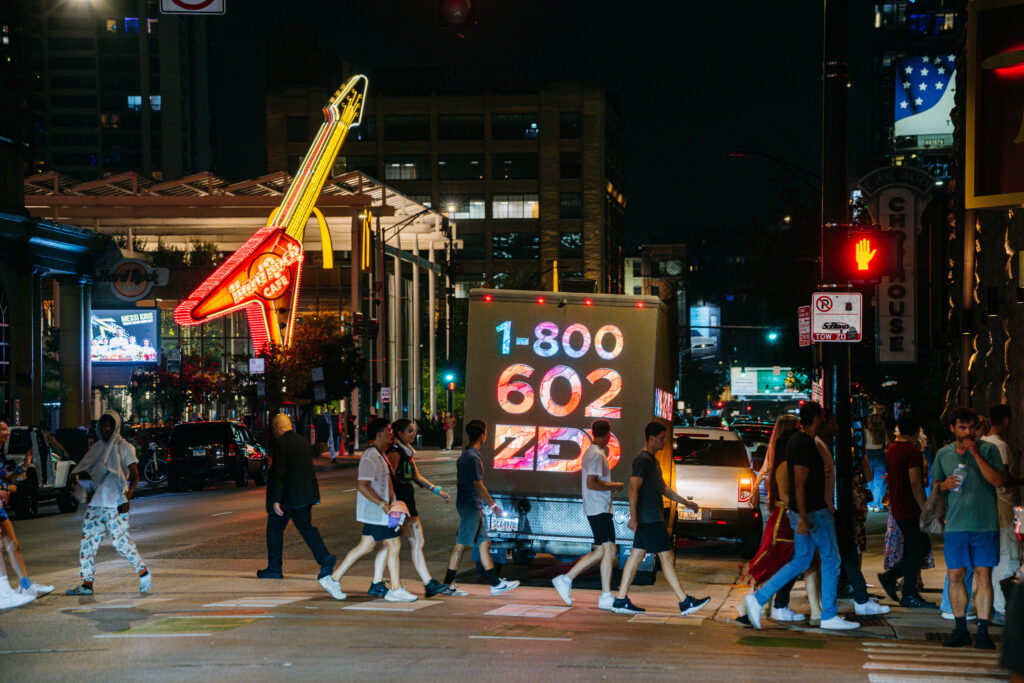
integration is Key
Incorporating digital technologies such as QR codes, augmented reality (AR), and social media tags into traditional outdoor advertising can significantly enhance consumer engagement and bridge the gap between physical and digital realms.
QR codes, for instance, can transform passive advertisements into interactive portals, directing viewers to online content, promotional offers, or interactive experiences. This integration not only makes the advertisement more engaging but also allows marketers to track interactions and gather valuable consumer data.
Augmented reality (AR) adds another layer of interaction by overlaying digital content onto the physical world through viewers’ smartphones. An AR-enabled billboard might bring a static image to life, showing animated content or interactive games that engage the viewer and create a memorable brand experience.
By using these digital elements, outdoor advertising can capture the attention of a tech-savvy audience, offering them a seamless blend of entertainment and information while they are on the move.
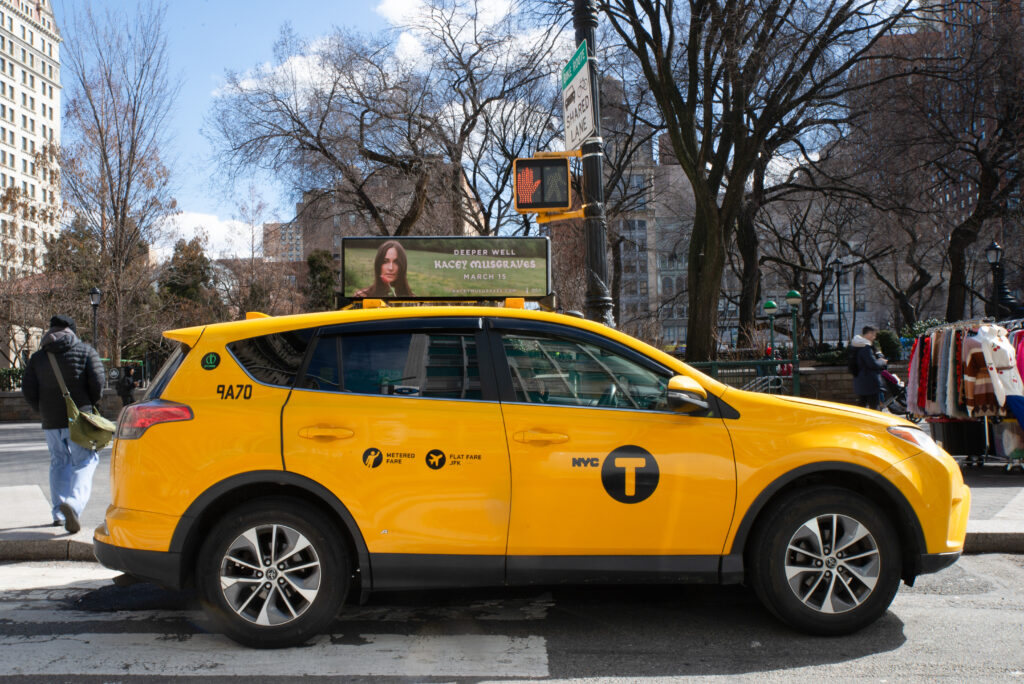
Measure the Effectiveness
Measuring the effectiveness of outdoor advertising campaigns is crucial for advertisers to understand their impact and optimize future strategies. With advancements in technology and data analytics, several tools and metrics have become available to assess the reach and engagement of outdoor ads effectively.
Tools for Tracking and Analytics
- Geolocation Data: Utilizing geolocation data from mobile devices allows advertisers to track the number of people passing by an advertisement and their engagement levels. By correlating this data with time stamps, advertisers can analyze high-traffic periods and the types of audiences most engaged with the ad.
- Eye-Tracking Technology: Some advanced outdoor advertising setups incorporate eye-tracking technology to measure exactly where and for how long viewers look at specific parts of an advertisement. This data provides invaluable insights into what captures attention and which elements might be overlooked.
- Conversion Tracking: For campaigns aimed at driving specific actions, such as visiting a website or a physical store, conversion tracking is key. QR codes, unique URLs, or promo codes can be used in the advertisement to trace the number of viewers who engage with the ad and subsequently perform the desired action.
Key Metrics to Consider
- Reach: This metric refers to the number of people who have potentially seen the advertisement. It’s typically estimated based on the location of the billboard and the traffic data of the area.
- Frequency: Frequency measures how often the same person might see the advertisement, which is crucial for building brand recall over time.
- Engagement: This can be quantified through interactions such as QR code scans, social media shares, or direct responses to calls-to-action included in the ad.
- Brand Lift: Surveys before and after the campaign can help measure changes in brand awareness and perception among the target audience, providing a direct insight into the ad’s impact on brand image.
- Sales Lift: For the ultimate measure of effectiveness, advertisers often look at sales data before and after the campaign to see if there was a noticeable increase in sales attributable to the advertising efforts.
By combining these tools and metrics, advertisers can gain a comprehensive understanding of how their outdoor advertising campaigns perform. This data not only helps in measuring current campaign success but also guides future marketing strategies, ensuring each ad placement is as effective as possible.

Legal and Ethical Considerations
While implementing our suggestions, it is critical for advertisers to keep things legal and ethical. Some of these aspects to consider include:
Legal Frameworks and Compliance
- Zoning Laws: Outdoor advertising is heavily regulated through zoning laws that dictate where billboards and other forms of outdoor ads can be placed. These laws vary widely by locality and can affect factors such as the size, lighting, and proximity to roads or residential areas.
- Content Restrictions: Certain content is prohibited in outdoor advertisements to maintain public decency and safety. This includes restrictions on advertising tobacco products, alcohol in certain areas, and content that could be considered offensive or misleading. It’s crucial for advertisers to understand these restrictions to prevent legal actions and potential fines.
- Intellectual Property: Ensuring that outdoor advertisements do not infringe on copyrights, trademarks, or other intellectual property rights is essential. This includes using images, music, slogans, or brand names that belong to someone else without permission, which could lead to legal disputes and financial liabilities.
Ethical Considerations
- Truthfulness and Honesty: Ethically, advertisers should commit to truthfulness, avoiding misleading claims or deceptive practices. This includes exaggerating benefits, using photos that do not accurately represent the product, or making false comparisons with competitors.
- Cultural Sensitivity and Inclusivity: Outdoor ads are viewed by a diverse audience. It is important to ensure that the content is culturally sensitive and does not perpetuate stereotypes or offend cultural norms. This includes considering the impact of imagery, language, and themes used in advertisements.
- Environmental Impact: Ethically, there is a growing responsibility for advertisers to consider the environmental impact of their outdoor campaigns. This includes the materials used in billboards, energy consumption of digital displays, and the overall ecological footprint of producing and maintaining advertising spaces.
- Data Privacy: With the increasing use of digital technologies such as facial recognition and mobile tracking in outdoor advertising, ethical considerations around consumer privacy are paramount. Advertisers must ensure they comply with data protection laws and respect consumer privacy by providing clear disclosures and obtaining necessary consents.
Advertisers must carefully balance their creative ambitions with legal obligations and ethical responsibilities. By staying informed about the evolving legal standards and societal expectations, advertisers can devise outdoor campaigns that are not only effective but also respectful and compliant. This approach not only safeguards the brand’s reputation but also contributes to a positive and ethical advertising environment.

ready to discuss your campaign?
FAQs
What is the recommended word limit for outdoor advertisements?
Keep the message short; ideally 7 words or less to ensure readability and impact, especially when viewed by people on the move.
Why should text be large and simple in outdoor ads?
Text should be at least a foot tall with increased spacing to be easily readable from a distance, typically over 500 feet.
How does placement affect outdoor advertising effectiveness?
Effective outdoor advertising requires intentional creative tailored to the size and format of the placement to connect with the audience effectively.
Should detailed images be used in all outdoor ads?
Use high-impact, high-resolution images for large billboards, but save detailed images for closer-view placements like transit shelters.
How can digital technologies enhance outdoor advertising?
Incorporating QR codes, augmented reality, and social media tags can transform passive ads into interactive experiences, increasing engagement and allowing for tracking.
What are some tools for tracking the effectiveness of outdoor ads?
Geolocation data, eye-tracking technology, and conversion tracking through QR codes or unique URLs are effective tools for assessing ad performance.
What are key metrics to consider when measuring outdoor ad effectiveness?
Reach, frequency, engagement, brand lift, and sales lift are critical metrics for evaluating the success of outdoor advertising campaigns.
